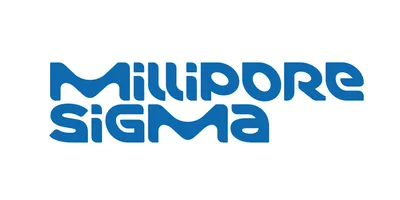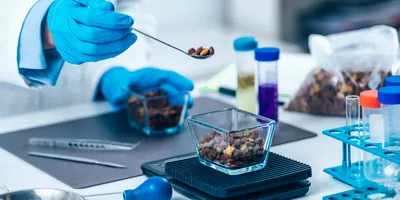Mixing solutions is one of the most common laboratory tasks. Over the years, a number of automated methods for mixing have been devised, all of which remove this burden from the operator by offering a sustained and controlled stirring action for indefinite periods of time.
Commercial labs often “scale down” large manufacturing processes that involve mixing combinations of water, organic solvents, and soluble and insoluble materials to create solutions, suspensions, slurries, syrups, pastes, and creams; others work with inherently viscous materials such as polymers.
Then there is the whole other world of small-scale chemistry, biology, and analytical laboratory operations associated with basic research, or in support of production or manufacturing research and development.
Top 7 Questions You Should Ask When Buying a Biological Shaker or Stirrer
1. What is the capacity of the unit (both for total weight and volume)?
2. What accessories are available?
3. What is the RPM range and what increments can it be controlled in?
4. What are the temperature and humidity operating conditions for the unit?
5. What programming functions, if any, does the unit have?
6. What type of motor does the shaker have? A brushed motor is an economical alternative with smooth motion. However, units with brushed motors typically require more maintenance. If a long lasting, quiet motor is a better fit for you, a brushless motor is the way to go, though units with this motor type are usually more expensive.
7. How easy is it to clean and disinfect the unit? What kind of features does the shaker have to prevent it from “walking” or moving off the benchtop? This is especially important if you will be working with hazardous biological materials.
Different types of lab shakers and stirrers respondents are using or planning to purchase for their lab, based on our latest survey:
| Currently Using | Planning to Purchase | |
| Rocking shaker | 93% | 7% |
| Magnetic stirrers (scale) | 95% | 5% |
| Vortex shaker | 92% | 8% |
| Hotplate stirrers | 90% | 10% |
| Vibrating shaker | 88% | 12% |
| Overhead stirrers (economic) | 89% | 11% |
| Orbital shaker | 88% | 12% |
| Magnetic stirrers (digital) | 87% | 13% |
| Biological shaker | 87% | 13% |
| Overhead stirrers (analogy) | 87% | 13% |
| Incubator shaker | 87% | 13% |
| Overhead stirrer (digital) | 87% | 13% |
| Reciprocal shaker | 86% | 14% |
| Magnetic stirrers (multi positions) | 82% | 18% |
| Nutating shaker | 82% | 18% |
Components respondents are using with their lab shakers and stirrers:
| Microtube adaptor | 22% |
| Stirring paddles | 26% |
| Plate adaptor | 19% |
| Stirring propellers | 32% |
| Flask attachments | 18% |
| Holding clamps | 36% |
Recently Released Biological Shakers & Stirrers
MaxQ HP
• Consist of open air and incubated bench-top models and incubated or refrigerated floor models
• Provide a “hard shake” for bacteria with a speed range from 25 to 525 rpm, while the brushless DC motors allow maintenance-free, 24/7 operation
• Easy to program and include a function that restricts unauthorized or inadvertent changes to key functions
Thermo Fisher Scientific
www.thermoscientific.com
BDC250
• Mixes two liters of water-like solutions from 50-2500 rpm
• Comes complete with 6 mm (¼”) diameter mixing shaft, a 3 cm (1 3/16”) axial and radial flow impeller and stand; no tools are required for assembly
• Integral clamp fits the stand rod (or lab lattice) up to 16 mm (5/8”) in diameter
Caframo
www.caframo.com
BioShake iQ
• Multiple instruments in one: thermoshaker with temperature control and incubator without shaking
• Features temperature range: RT to 99°C
• Smooth running conditions without vibration or noise
• For microtiter plates, PCR plates, deep well plates, tubes and glass vials
• Boasts compact and lightweight aluminum design; includes two-year warranty
Biometra
www.biometra.com
New Brunswick Scientific
• Over 40 models available, including a broad range of open-air incubated, or incubated/refrigerated models
• New model S41i incubator shaker with advanced C02 control now available
• Innova shakers feature triple-eccentric drive for uniform motion and superb reliability under the most adverse conditions
• Economic Excella® shakers feature microprocessorcontrols and heavy-duty counterbalanced drives
New Brunswick Scientific
www.nbsc.com
Biological Shakers & Stirrers Manufacturers
| Asynt | www.asynt.com |
| Bel-Art Products | www.belart.com |
| Boekel Scientific | www.boekelsci.com |
| Bibby Scientific | www.bibby-scientific.com |
| Caframo | www.caframo.com |
| Eberbach | www.eberbachlabtools.com |
| Eppendorf | www.eppendorfna.com |
| Grant Instruments | www.grantsci.com |
| Heidolph USA | www.heidolphUSA.com |
| IKA Works | www.ika.net |
| Jeio Tech | www.jeiotech.com |
| Kinematica | www.kinematica-inc.com |
| Labnet International | www.labnetlink.com |
| Labnics Equipment | www.labnics.com |
| LabStrong | www.labstrong.com |
| New Brunswick Scientific | www.nbsc.com |
| Pro Scientific | www.proscientific.com |
| SANYO | www.sanyo.com |
| Sartorius Stedim | www.sartorius-stedim.com |
| Scientific Industries | www.scientificindustries.com |
| Silverson Machines | www.silverson.com |
| Stovall Life Science | www.slscience.com |
| TECA | www.thermoelectric.com |
| Thermo Fisher Scientific | www.thermoscientific.com |
| Troemner | www.troemner.com |
| UDY Corporation | www.udyone.com |
| Yamato Scientific America | www.yamato-usa.com |









